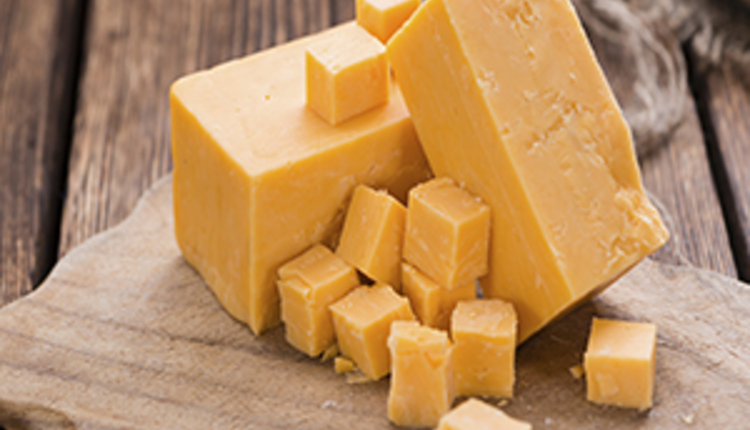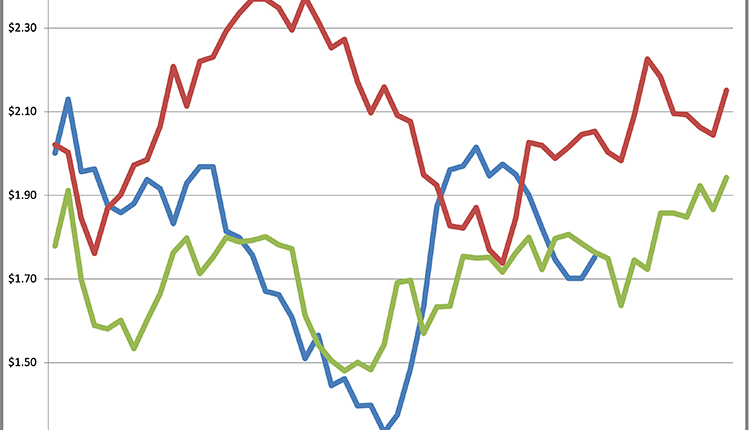The information below has been supplied by dairy marketers and other industry organizations. It has not been edited, verified or endorsed by Hoard’s Dairyman.
As supplemental fat costs remain high and at times product consistency comes into question, dairies and their nutritionists' interest in high oleic soybeans has been soaring. These practically ‘gold’ legumes sound like a potential saving grace for dairy rations everywhere - but what is oleic fatty acid, and why is it propelling this soybean variety from a long-standing feed and common ingredient, to stardom?
“Individual fatty acids have different digestion coefficients and can do different things in dairy rations - we know this thanks to Dr. Adam Lock’s work at Michigan State University, Dr. Kevin Harvatine’s work at Penn State University, and the latest Nutrient Requirements of Dairy Cattle publication,” explains John Goeser, Rock River Laboratory. “Oleic acid, specifically, seems to exude a positive impact on other fatty acids.”
Fatty acid digestion coefficients range from below 50 percent to well above average, meaning if you feed one pound of fat, in some undesirable cases, less than 0.5 pounds could be absorbed by the animal. Oleic fatty acid is special in that it improves the absorption of other fatty acids in the gut, theoretically creating a more absorbable structure with other fats.
The HO effect
“High oleic beans qualify for their title when seventy percent of the fatty acid is oleic,” shares Goeser. “Ultimately, this means we can feed more - to the tune of 4-6.5 lbs of roasted high oleic soybeans, without disrupting milk fat.” Some nutritionists and their dairies are pulling back supplemental fat in response to sourcing enough high oleic beans to cover this volume, and others are observing a substantial production response associated with feeding these soybeans. This could be an oleic acid effect or attributed to the greater energy density in the diet overall, “especially if we’re moving the diet from 4.5 percent fat to 5.5 and six percent fat,” explains Goeser.
Replacing supplemental fat and a bit of protein with high oleic beans could save dairies $0.50 to $0.70 per hundredweight. However, producers are facing hurdles in sourcing, processing, and the logistics surrounding these special beans. “Infrastructure investment needs to happen,” shares Goeser. “Ten to fifteen cents of the saved nutrition expenses could be directed back toward grower premiums, storage, infrastructure, and roasters.” Monitoring the soybeans' feeding value after all this is in place is necessary to then harvest the economic rewards.
Managing particle size and roasting efficacy is also relevant to maintaining the nutritional value of high oleic beans. If roasting is sub-par, rumen protein degradation can occur, short-changing the protein value of the ration.
“Raw soybean and canola protein is fairly degradable in the rumen - to the tune of sixty, seventy, or even eighty percent - and this isn’t necessarily ideal,” says Goeser. As such, the roasting is done primarily to increase the protein rumen bypass and value in dairy rations. When laboratories analyze high oleic soybeans, they can assess protein roasting efficacy, grain particle size, and the soybeans’ fatty acid profile. All of these analyses address different nutritional characteristics of the beans.
“We also recommend analyzing fecal fat over time to monitor the total diet’s fatty acid digestibility from high oleic soybeans and other supplemental fat sources,” suggests Goeser.
Fatty acid understanding
Fatty acids in general have become a new source of nutritional interest in dairy rations, and nutritionists are now looking for different insights. Within ration formulation software, there is now the granular ability to formulate specific fatty acid amounts or ratios and even account for different fatty acid digestion coefficients. Premium fatty acid supplements are now supplying specific fatty acid blends to achieve various purposes. In some cases, long-chain fatty acids may even have neutraceutical effects such as improved health or reproductive performance.
Supplemental fat has much to offer the dairy cow. As research continues in this area, it will help to harness fatty acids’s potential and further dial-in rations to optimize the health and production of these Olympians. While the drive to explore high oleic acid soybeans continues, those dairies who look to capture this opportunity should talk to their nutritionist, fellow growers, and feed vendors to discuss their best means of taking advantage of this ‘fat’ opportunity.
Founded in 1976, Rock River Laboratory is a family-owned laboratory network that provides production assistance to the agricultural industry through the use of advanced diagnostic systems, progressive techniques, and research-supported analyses. Employing a team of top specialists in their respective fields, Rock River Laboratory provides accurate, cost-effective, and timely analytical results to customers worldwide, while featuring unsurpassed customer service.






